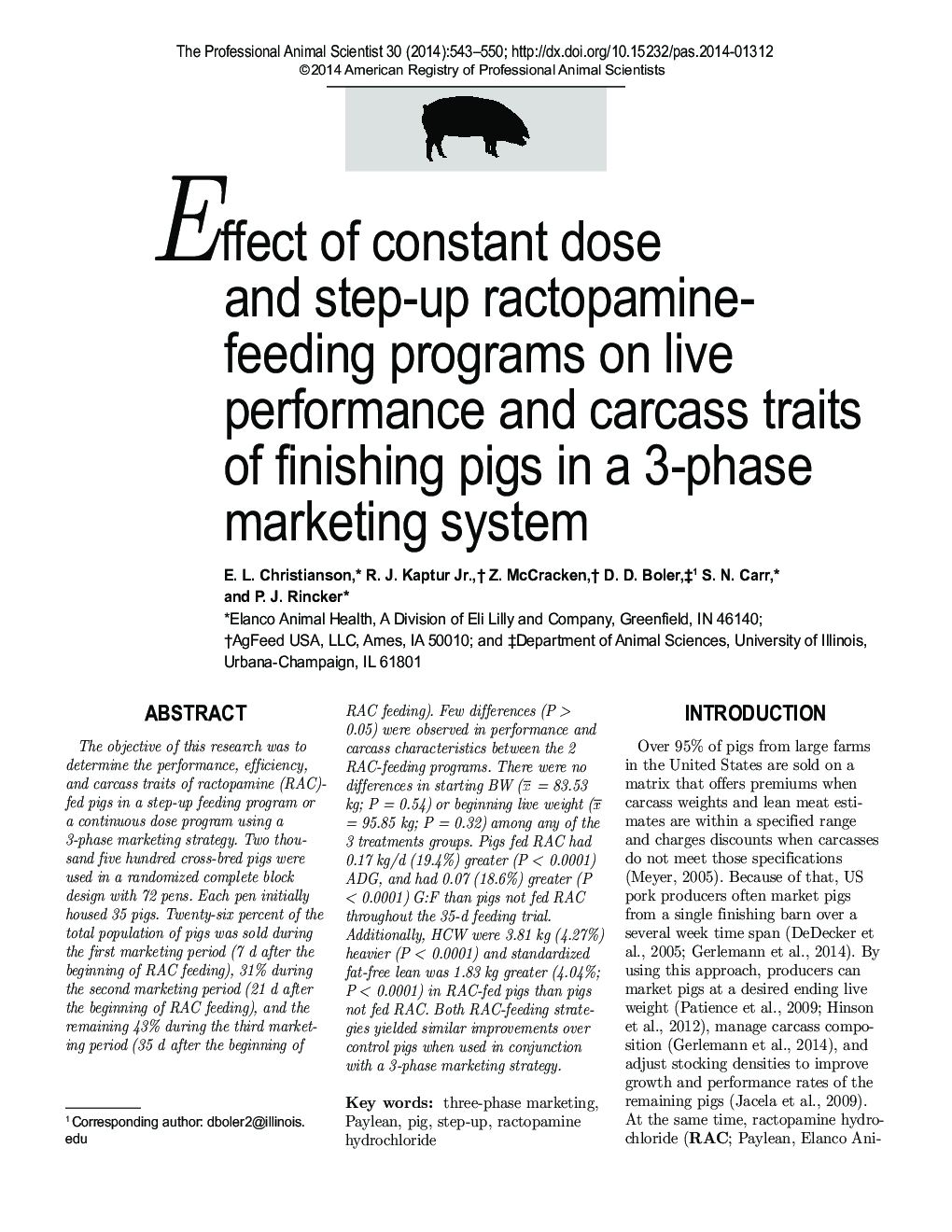| Article ID | Journal | Published Year | Pages | File Type |
|---|---|---|---|---|
| 2453837 | The Professional Animal Scientist | 2014 | 8 Pages |
Abstract
The objective of this research was to determine the performance, efficiency, and carcass traits of ractopamine (RAC)-fed pigs in a step-up feeding program or a continuous dose program using a 3-phase marketing strategy. Two thousand five hundred cross-bred pigs were used in a randomized complete block design with 72 pens. Each pen initially housed 35 pigs. Twenty-six percent of the total population of pigs was sold during the first marketing period (7 d after the beginning of RAC feeding), 31% during the second marketing period (21 d after the beginning of RAC feeding), and the remaining 43% during the third marketing period (35 d after the beginning of RAC feeding). Few differences (PÂ >Â 0.05) were observed in performance and carcass characteristics between the 2 RAC-feeding programs. There were no differences in starting BW (x- =Â 83.53Â kg; PÂ =Â 0.54) or beginning live weight (x- =Â 95.85Â kg; PÂ =Â 0.32) among any of the 3 treatments groups. Pigs fed RAC had 0.17Â kg/d (19.4%) greater (PÂ <Â 0.0001) ADG, and had 0.07 (18.6%) greater (PÂ <Â 0.0001) G:F than pigs not fed RAC throughout the 35-d feeding trial. Additionally, HCW were 3.81Â kg (4.27%) heavier (PÂ <Â 0.0001) and standardized fat-free lean was 1.83Â kg greater (4.04%; PÂ <Â 0.0001) in RAC-fed pigs than pigs not fed RAC. Both RAC-feeding strategies yielded similar improvements over control pigs when used in conjunction with a 3-phase marketing strategy.
Related Topics
Life Sciences
Agricultural and Biological Sciences
Animal Science and Zoology
Authors
E.L. Christianson, R.J. Jr., Z. McCracken, D.D. Boler, S.N. Carr, P.J. Rincker,
